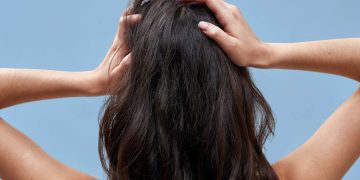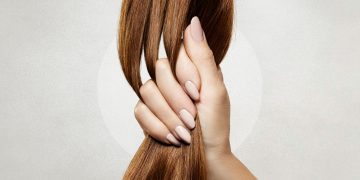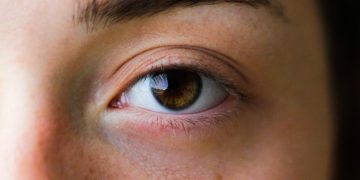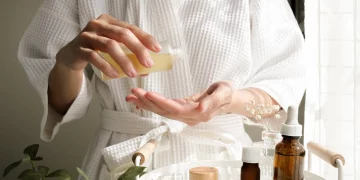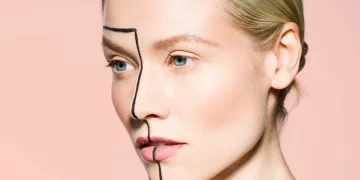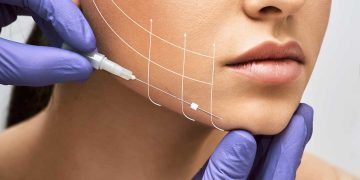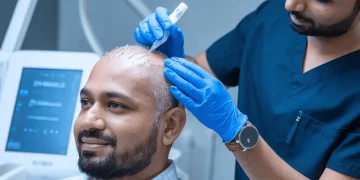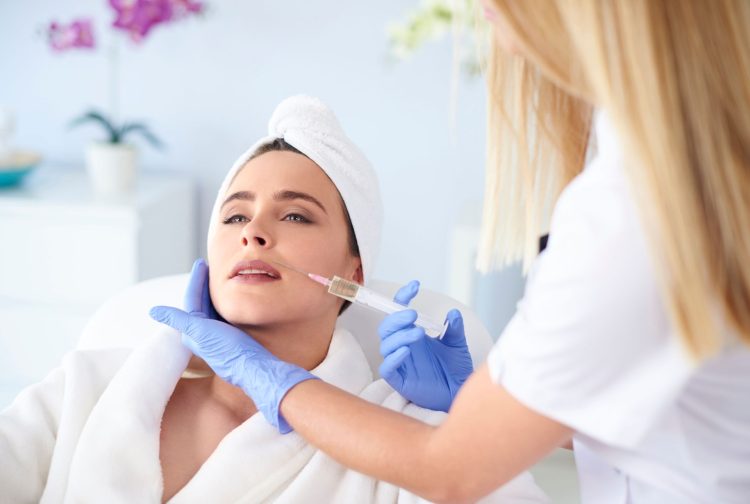For decades, the beauty and aesthetics industry has been marketed almost exclusively to women. From anti-aging creams to cosmetic surgery, the narrative surrounding appearance enhancement was deeply gendered. But in the last decade, a quiet revolution has been unfolding — one led by men. Male aesthetics is no longer a niche segment; it’s a booming global market reshaping how masculinity, self-care, and beauty are defined. With cultural attitudes shifting and men’s wellness becoming a mainstream conversation, the question isn’t whether male aesthetics will grow — it’s how far it will go.
1. Redefining Masculine Beauty: From Rugged to Refined
In the past, masculinity was often equated with ruggedness, effortlessness, and a stoic disregard for personal grooming. Today’s reality is dramatically different. Social media, celebrity influence, and professional competitiveness have created a new paradigm: men who look after themselves are not vain, they are confident.
Modern masculinity embraces grooming and appearance enhancement as extensions of health, discipline, and social intelligence. Male models and public figures — from David Beckham’s perfectly styled beard to BTS’s youthful glass skin — showcase that beauty routines aren’t gendered anymore. This redefinition has made men more open to aesthetic treatments once considered taboo, from dermal fillers to Botox (“Brotox”) and laser hair removal.
In essence, masculinity now allows for self-improvement without stigma — and aesthetic medicine is reaping the benefits.
2. Masculine Facial Contouring: Subtle Enhancement, Not Transformation
One of the fastest-growing sectors in male aesthetics is facial contouring. Unlike female procedures that emphasize softness and volume, male facial sculpting focuses on structure, symmetry, and strength.
Clinicians now design treatment plans that enhance masculine features — a more defined jawline, higher cheekbones, and balanced proportions. Fillers like hyaluronic acid are strategically placed to sharpen contours rather than soften them. Treatments such as chin augmentation, jawline fillers, and buccal fat removal are gaining popularity among men who seek a strong but natural look.
Aesthetic doctors often stress the importance of subtlety. The goal is refinement, not feminization. The best work goes unnoticed — a refreshed, confident appearance that doesn’t betray signs of intervention.
Technological advances, including 3D facial mapping and AI-assisted symmetry analysis, allow practitioners to plan results that preserve masculine energy while enhancing aesthetics. The art now lies in preserving individuality — a sculpted jawline that looks powerful, not plastic.
3. Anti-Aging for Men: Preventive, Discreet, and Practical
Men are increasingly seeking anti-aging solutions, but their motivations differ from women’s. For many, the concern is professional competitiveness — appearing energetic, capable, and youthful in a fast-paced world that values vitality.
Dermatologists report a surge in men requesting non-invasive treatments such as:
- Botox and Xeomin to soften forehead lines without freezing expression.
- Laser resurfacing to reduce sun damage and even skin tone.
- Microneedling with growth factors for natural rejuvenation.
- Hair restoration therapies using PRP or exosome infusions.
These treatments are often marketed under “maintenance” rather than “cosmetic” language — appealing to men who prioritize performance and results over beauty ideals. Clinics also adapt their environments: darker décor, privacy screens, and male-oriented branding all help remove psychological barriers.
The modern male client is pragmatic. He seeks evidence-based results, minimal downtime, and procedures that fit discreetly between meetings.
4. Breaking the Stigma: The Psychology Behind Acceptance
Cultural stigma remains one of the biggest barriers to male participation in aesthetics. However, the narrative is changing rapidly, driven by three major forces: media representation, generational change, and the normalization of self-care.
In the 1990s, male grooming was often framed as metrosexuality — a label that still carried undertones of insecurity. Today, younger generations see self-care as gender-neutral. The rise of skincare influencers and male wellness advocates has normalized the conversation.
Men are also realizing that aesthetics isn’t about vanity — it’s about self-presentation, confidence, and health. Studies show that men who engage in grooming and skin maintenance report higher levels of self-esteem and lower anxiety in social situations. This psychological benefit reinforces repeat engagement with aesthetic practices.
Brands have responded strategically. Campaigns for products like Dior Homme skincare or Clinique for Men avoid traditional “beauty” messaging, instead emphasizing performance, efficiency, and confidence. The language has evolved from looking good to feeling powerful.

5. Data Speaks: The Global Surge in Male Aesthetic Demand
Market analytics confirm what culture already suggests — male aesthetics is the next frontier of growth. According to Allied Market Research, the global male grooming market is projected to exceed $250 billion by 2030, with non-surgical aesthetic procedures growing at double-digit annual rates.
The American Society of Plastic Surgeons (ASPS) reports a 29% increase in male cosmetic procedures over the past five years. Botox, dermal fillers, and hair transplants top the charts, while body contouring and skin tightening are fast rising categories.
In Asia, particularly South Korea, Japan, and China, aesthetic treatments for men are already normalized. Clinics cater specifically to male clients, offering package deals for facial refinement and body sculpting. The “K-beauty for men” phenomenon has influenced global perceptions — showing that looking polished is an advantage, not a compromise of masculinity.
Western markets are catching up quickly, especially among millennial and Gen Z men, who grew up in a visual culture of selfies and video calls. In this demographic, aesthetic maintenance is as routine as gym memberships or dental hygiene.
6. Beyond the Face: The Rise of Male Body Aesthetics
Male aesthetic trends extend beyond facial treatments. Procedures like CoolSculpting, Emsculpt, and liposuction have seen rising adoption among men seeking leaner, more defined physiques. These technologies allow fat reduction and muscle stimulation without surgery — appealing to those who want faster, gym-complementary results.
Hair restoration remains a major growth driver. The stigma around baldness has softened, but many men still seek solutions for thinning hair through FUE transplants, PRP therapy, or low-level laser therapy.
Moreover, clinics now offer male-specific skin rejuvenation and pigment correction services, addressing issues like razor burns, acne scars, and sun damage — common but previously under-discussed male skin concerns.
Aesthetics for men has become holistic, encompassing face, body, hair, and lifestyle — a complete ecosystem of self-optimization.
7. Cultural Shifts: From Vanity to Vitality
The cultural meaning of aesthetics is evolving from beauty to vitality. Where beauty once implied perfection, vitality emphasizes energy, wellness, and authenticity.
Men’s entry into this space signals a broader cultural realignment: society now views aesthetics as an element of self-expression and self-respect. In corporate and social contexts alike, appearance influences perception — and investing in it is increasingly seen as an act of empowerment, not indulgence.
Even Hollywood has played its part. Actors like Chris Evans, Ryan Reynolds, and Henry Golding exemplify an approachable aesthetic — masculine yet polished, confident yet relatable. These public figures subtly reinforce the idea that looking good is integral to success, not a betrayal of manhood.
8. The Future: Toward an Inclusive Aesthetic Ecosystem
As male aesthetics enters the mainstream, the future points toward integration, inclusivity, and innovation. The next decade will likely see:
- AI-driven personalization, where treatment plans adapt to genetic, hormonal, and lifestyle data.
- Gender-neutral clinic branding, breaking down the last remnants of stigma.
- Cross-disciplinary collaboration between dermatologists, psychologists, and nutritionists for holistic wellness.
- Social acceptance where men discuss skincare routines as naturally as fitness goals.
Ultimately, the rise of male aesthetics is not just about changing looks — it’s about changing language. It redefines care, identity, and the modern expression of masculinity.
The next big market isn’t built on vanity. It’s built on visibility — the right to care about how one looks, feels, and presents to the world, regardless of gender.














